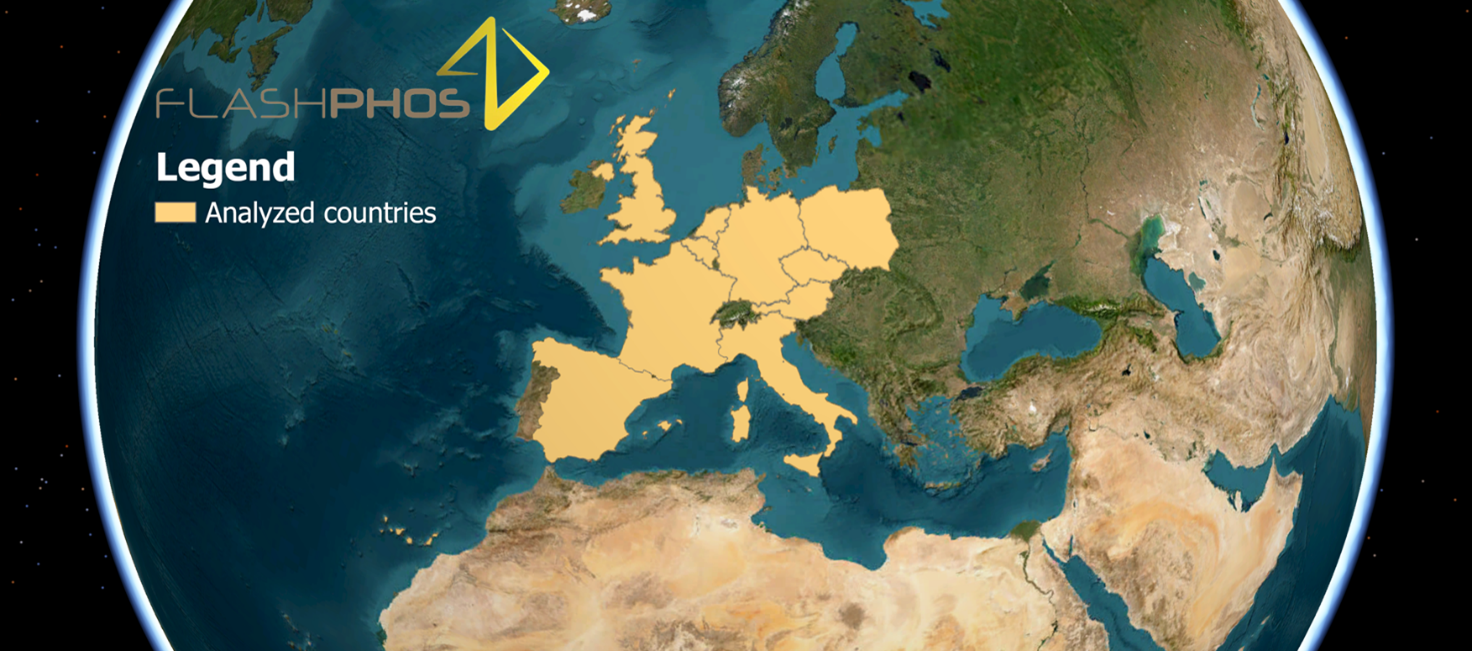Our 5th work package (WP5) focuses on resource management of all materials fed into and produced by the FlashPhos process and the EU-wide implication of FlashPhos on the market.
In this blog, we want to show you how we analyze EU-wide material flows to find the right material for our pilot plant and how we identify suitable places for future FlashPhos plants on an industrial scale.
The map
Our goal is to compile market studies and material flow analyses in a database, which can then be displayed in an interactive geographic information system (GIS) map. The map supports other work packages, such as the scale-up (WP7), environmental impact assessment (WP8) and finally the market replication model of WP9.
With all this data linked, we were already able to decide on the location of our first pilot aggregate: Our Dryer-Grinder has been commissioned in Germany, producing the powdery input for our Flash reactor (see also Step 1 of the FlashPhos Process – the Dryer-Grinder and Dryer-Grinder pre-experiments)
Did you know that the main input material for our process, sewage sludge, varies in composition depending on the technology used in the wastewater treatment plants, the infrastructure around the plants and other factors? Almost no sewage sludge has the composition needed for an efficient use for FlashPhos.
To compensate for these differences, we will adjust the composition with additives. Therefore, we are looking for suitable industrial wastes, serving as additives. By closing their lifecycle, the negative environmental impact of FlashPhos is reduced even more.
Hence, data on suitable waste additives, like composition, mass flows and disposal prices, are part of our multi-layer map as well. Together with the sewage sludge data, the map identifies spots in Europe that favour the needs of FlashPhos.

Figure 1 Geographic map of sewage treatment plants in European countries
Outlook
The map is designed in a way that future users can update and add information. This way, the map can still be of use to the FlashPhos consortium after the project. We even plan to publish an open-source version, which the public can further develop for any kind of resource recovery and use for their purposes.
Stay tuned for the latest information regarding the FlashPhos project!
For further information contact
Ayumi Schober
University of Stuttgart, Institute for Sanitary Engineering, Water Quality and Solid Waste Management
Lukas Pohl
University of Stuttgart, Institute for Sanitary Engineering, Water Quality and Solid Waste Management

